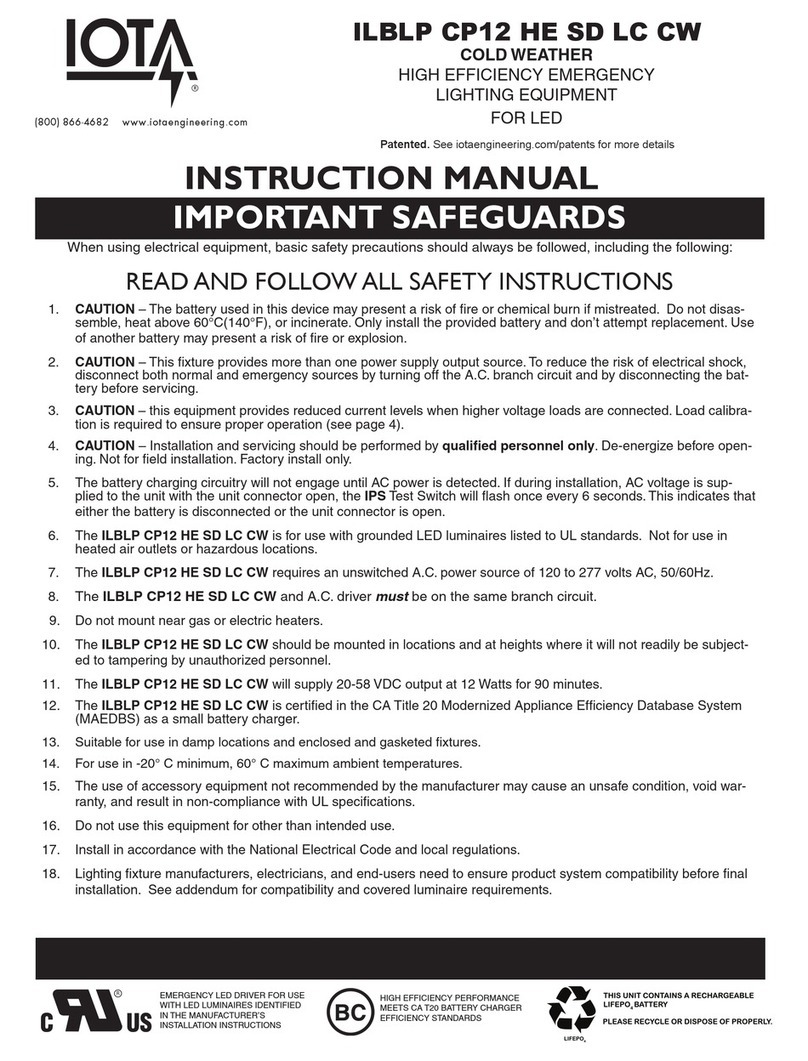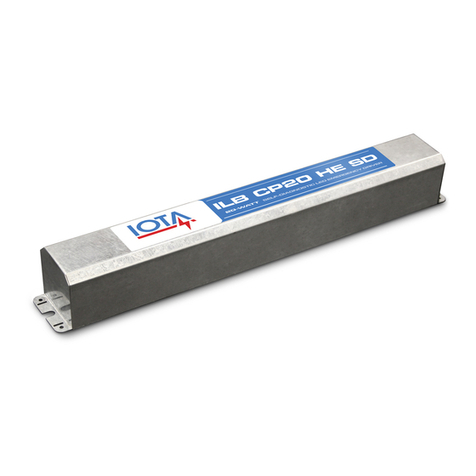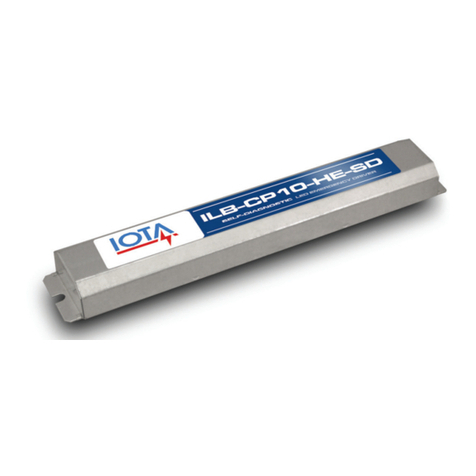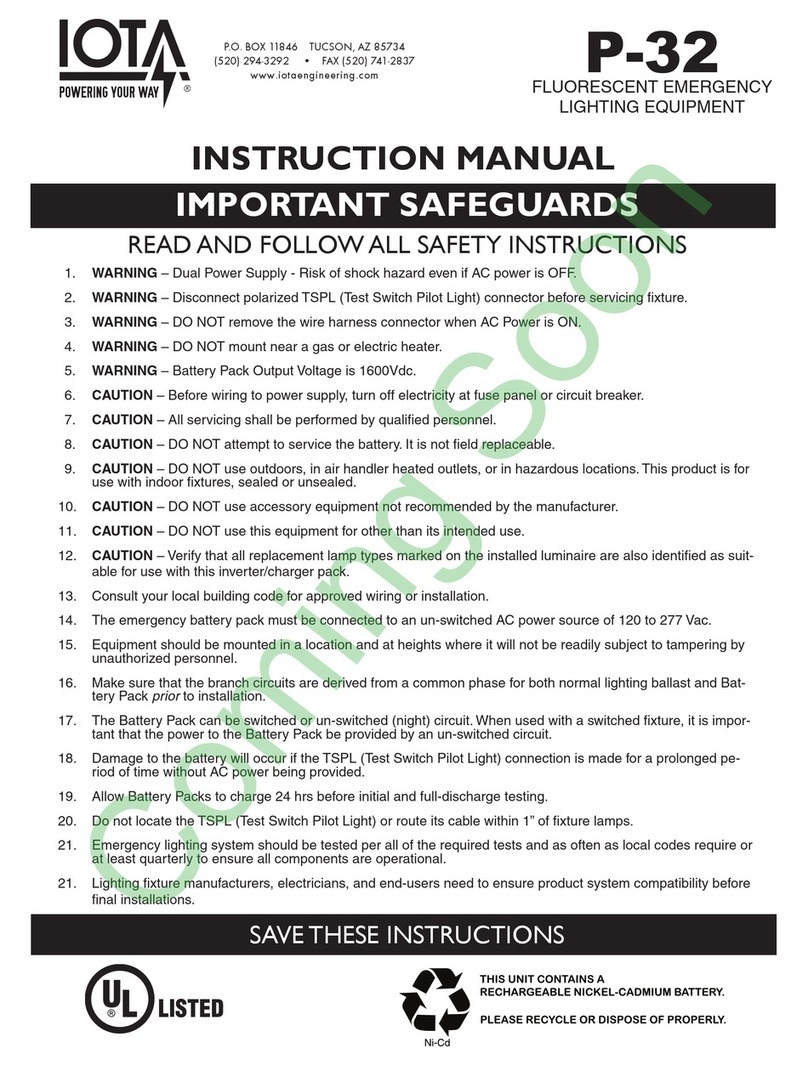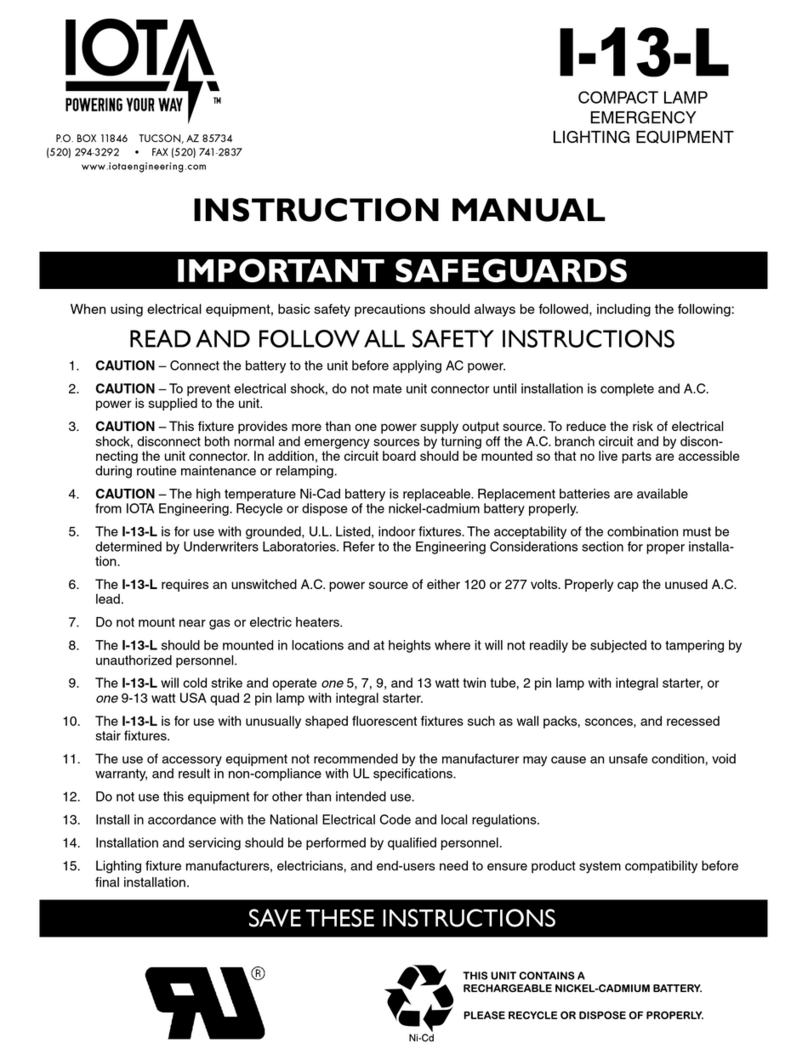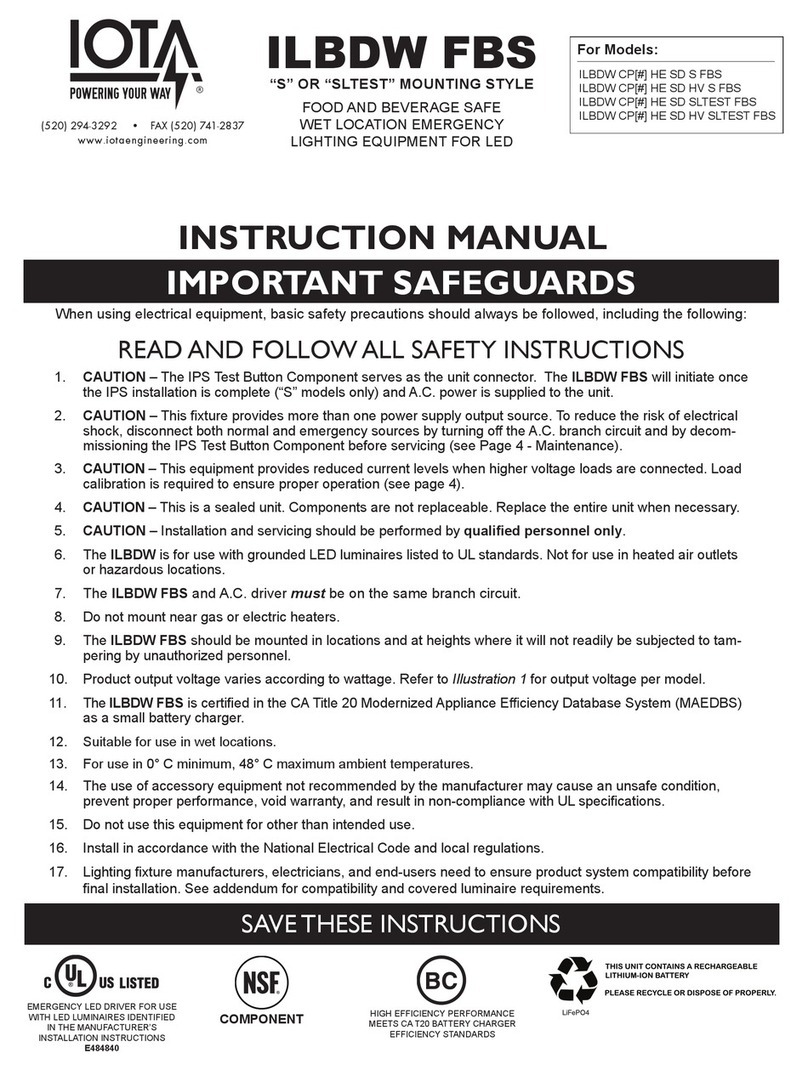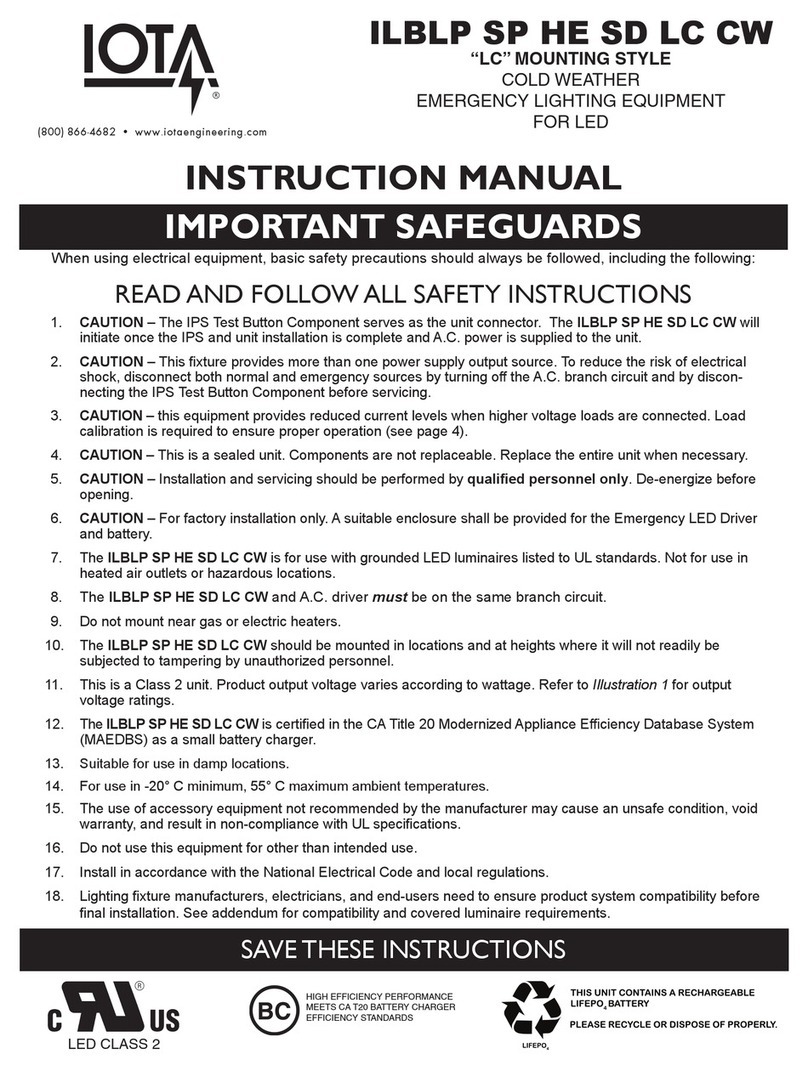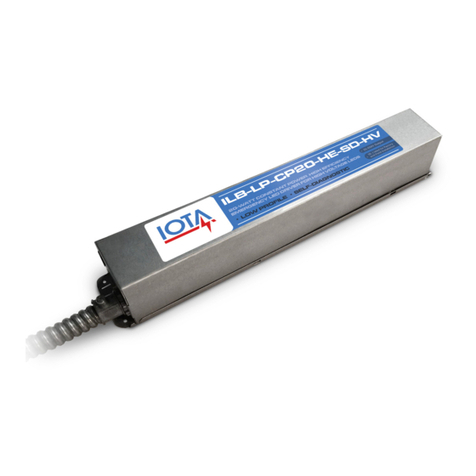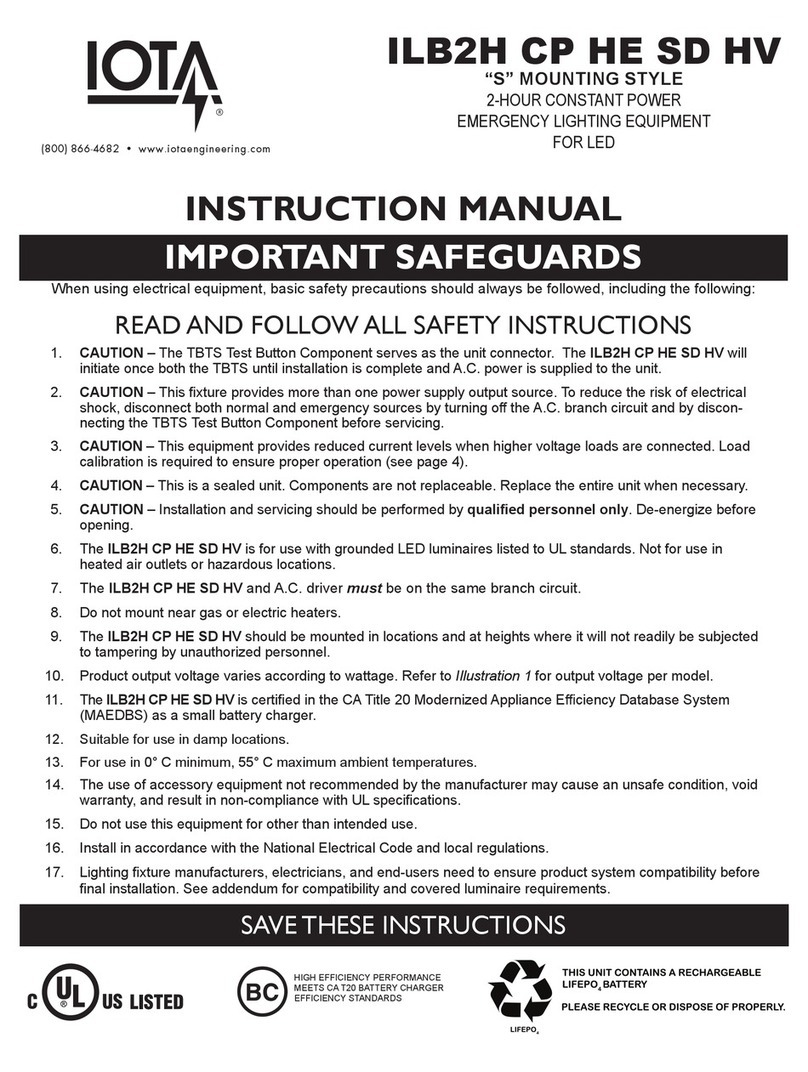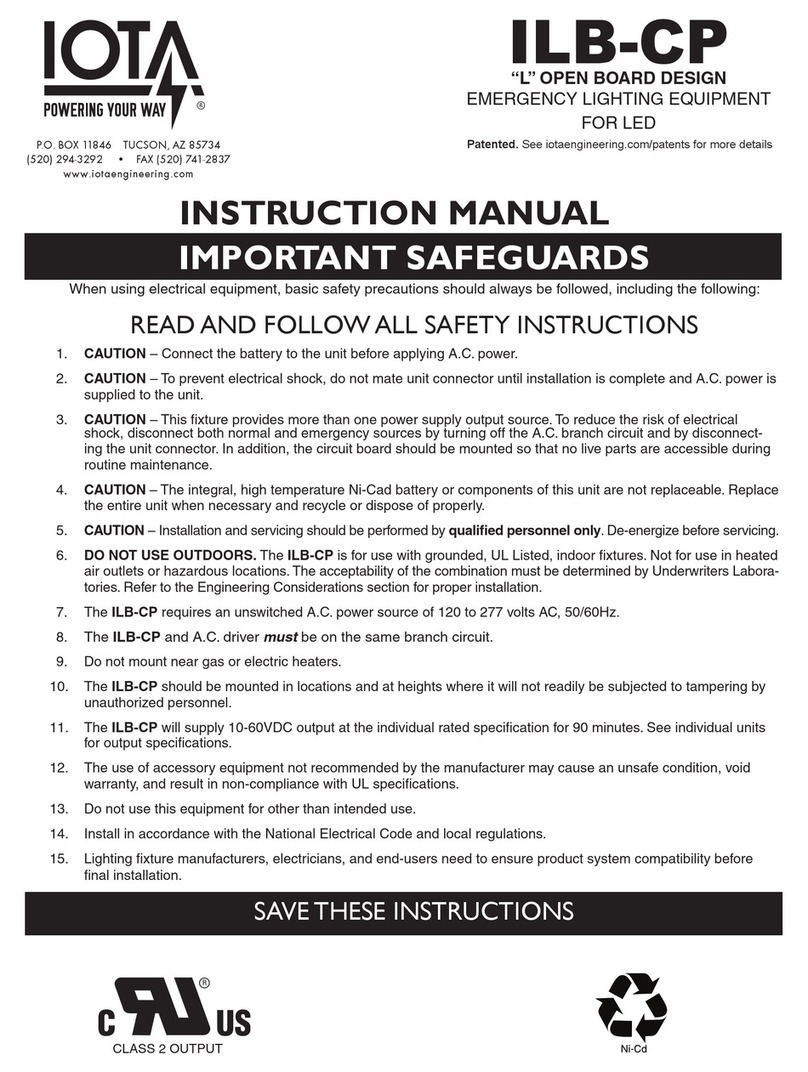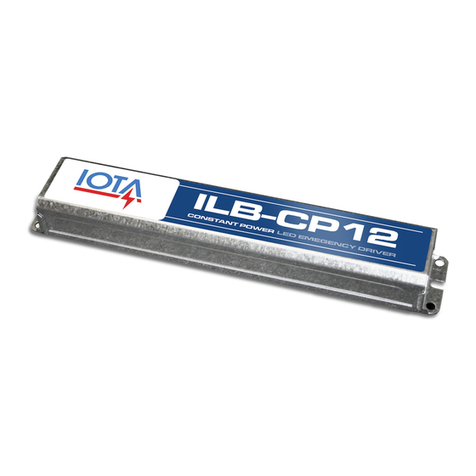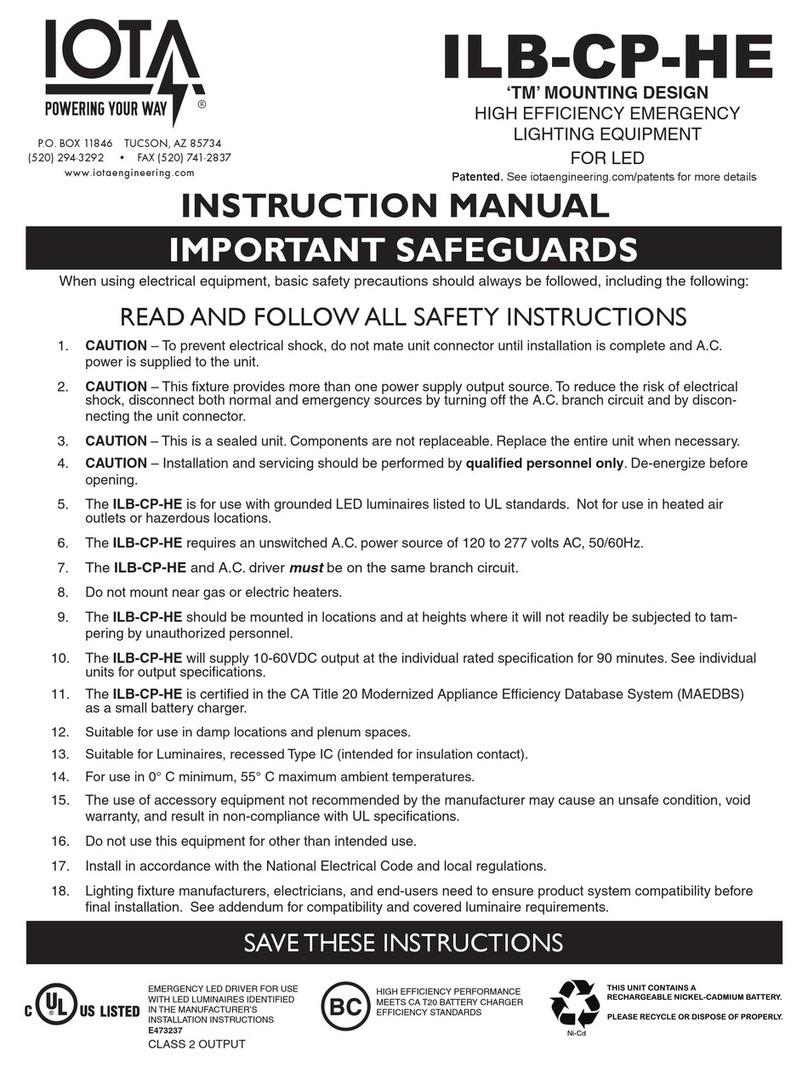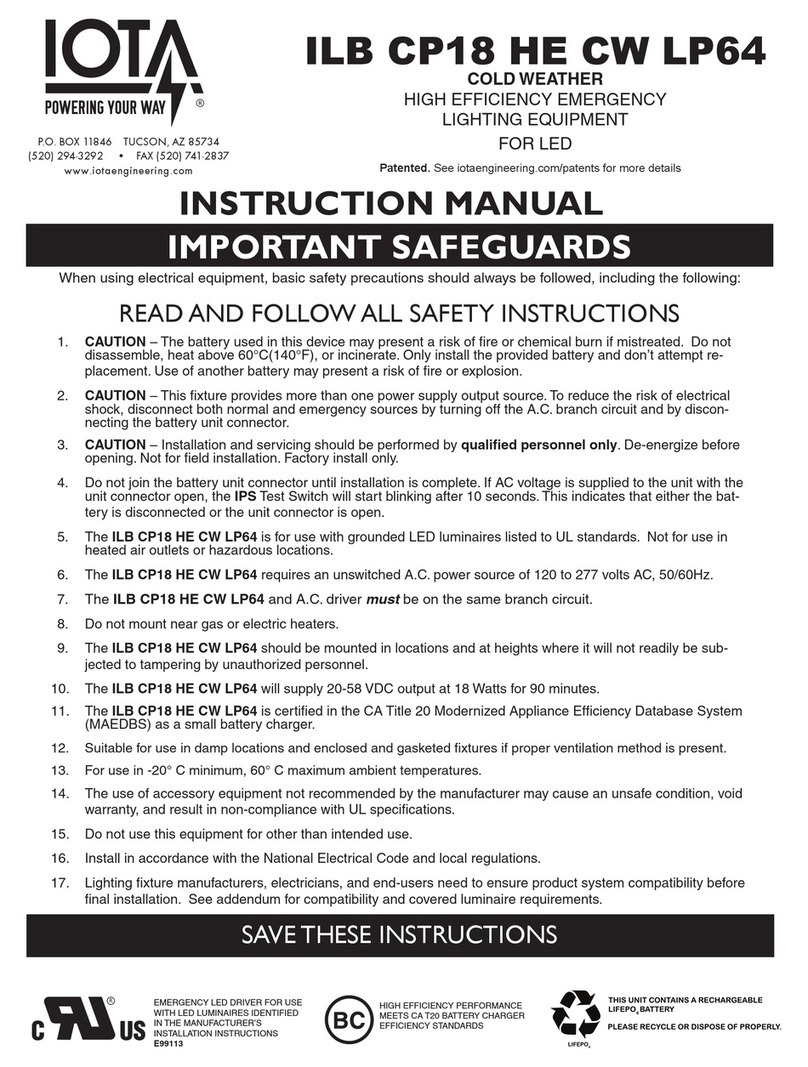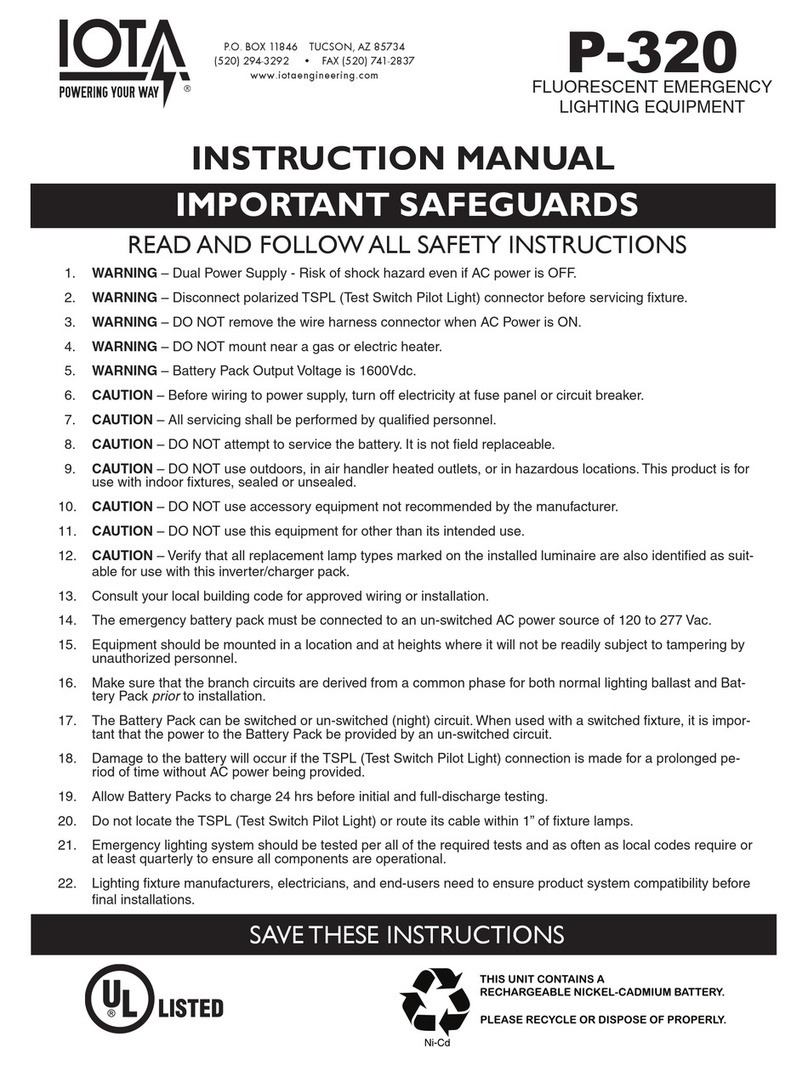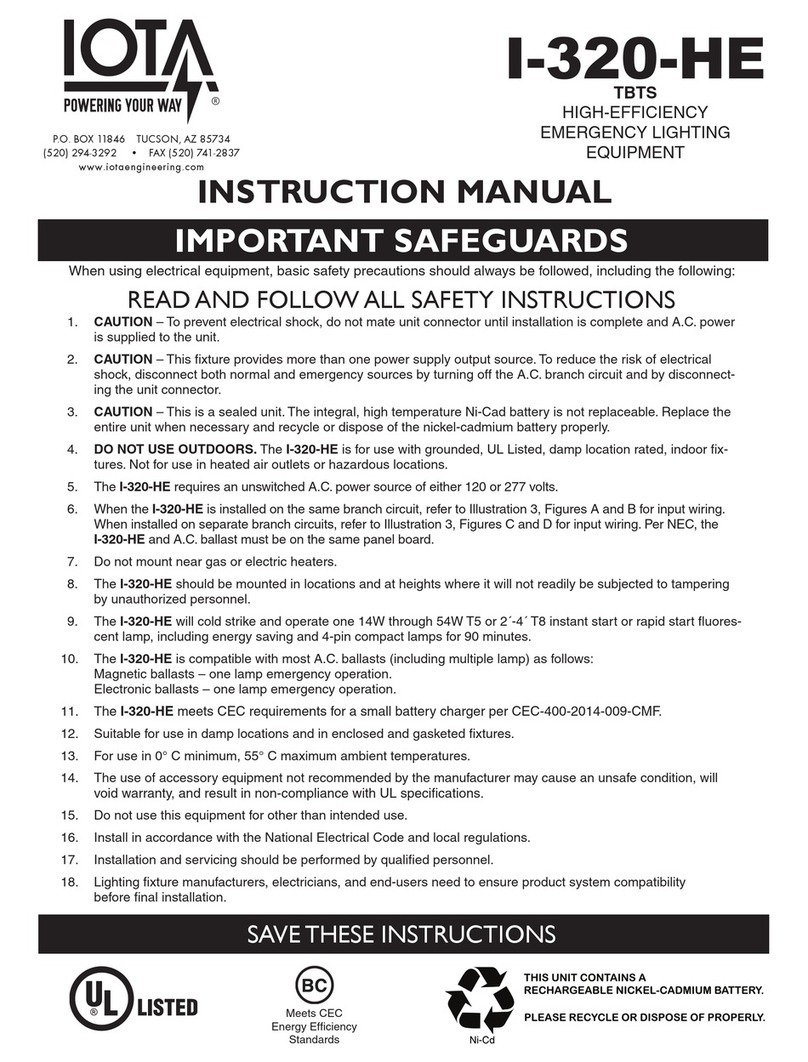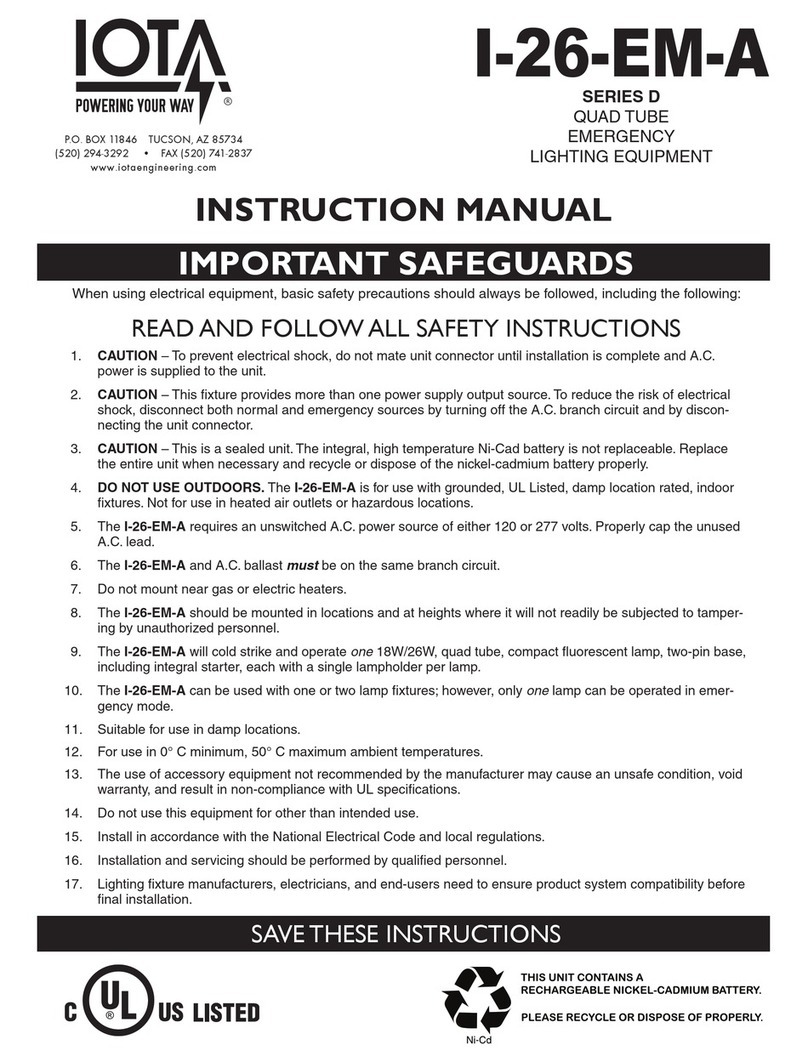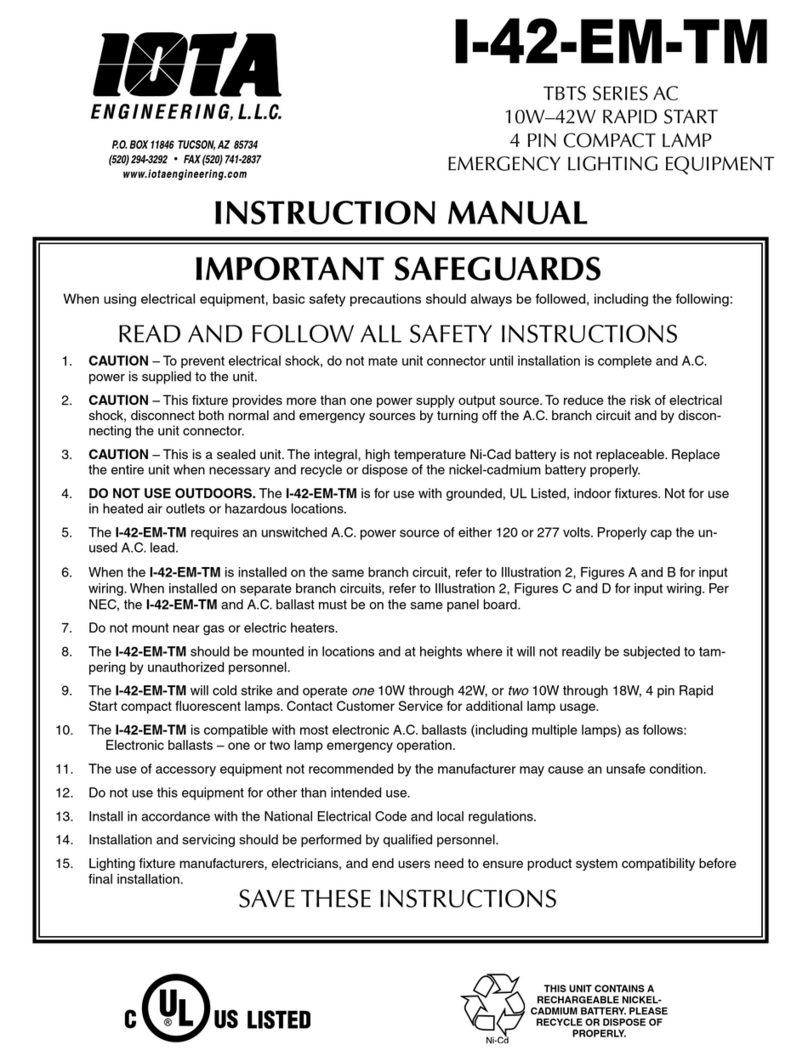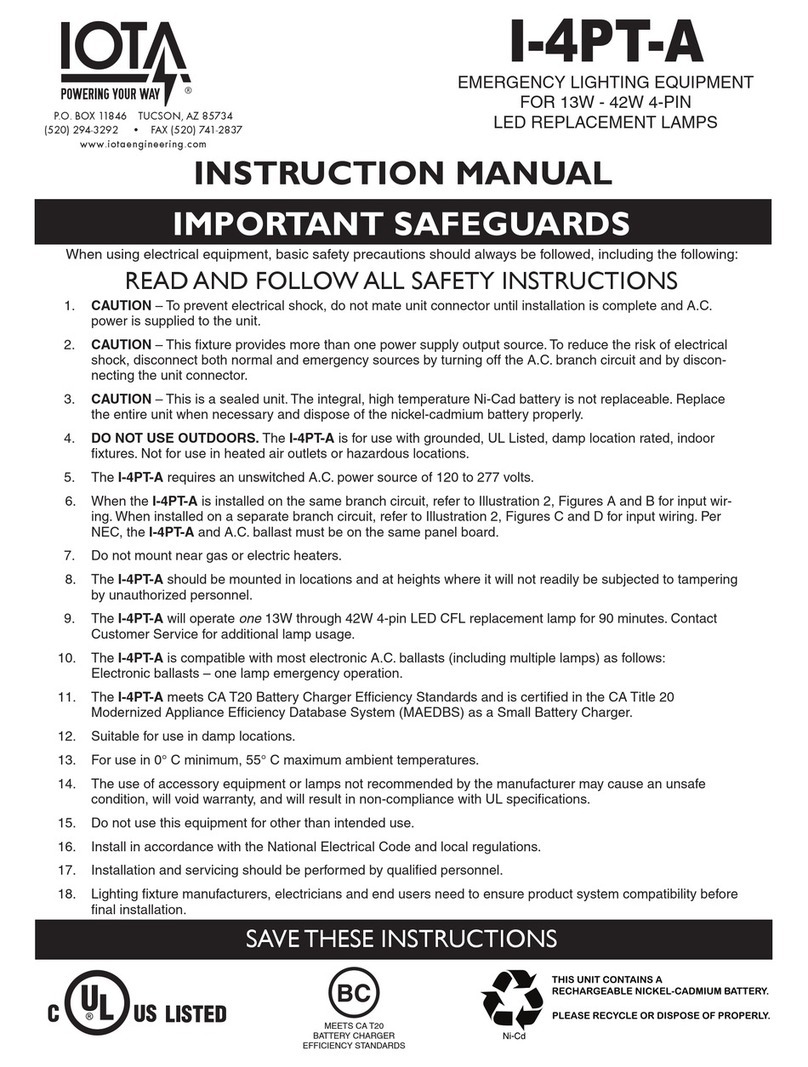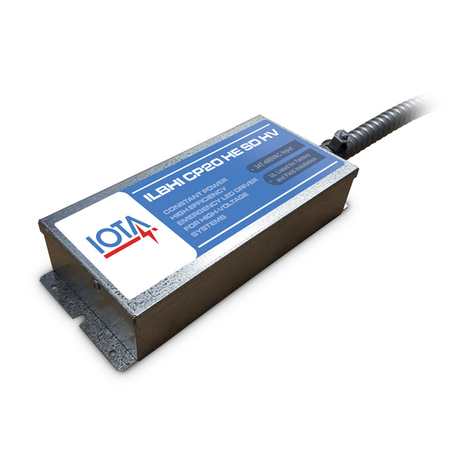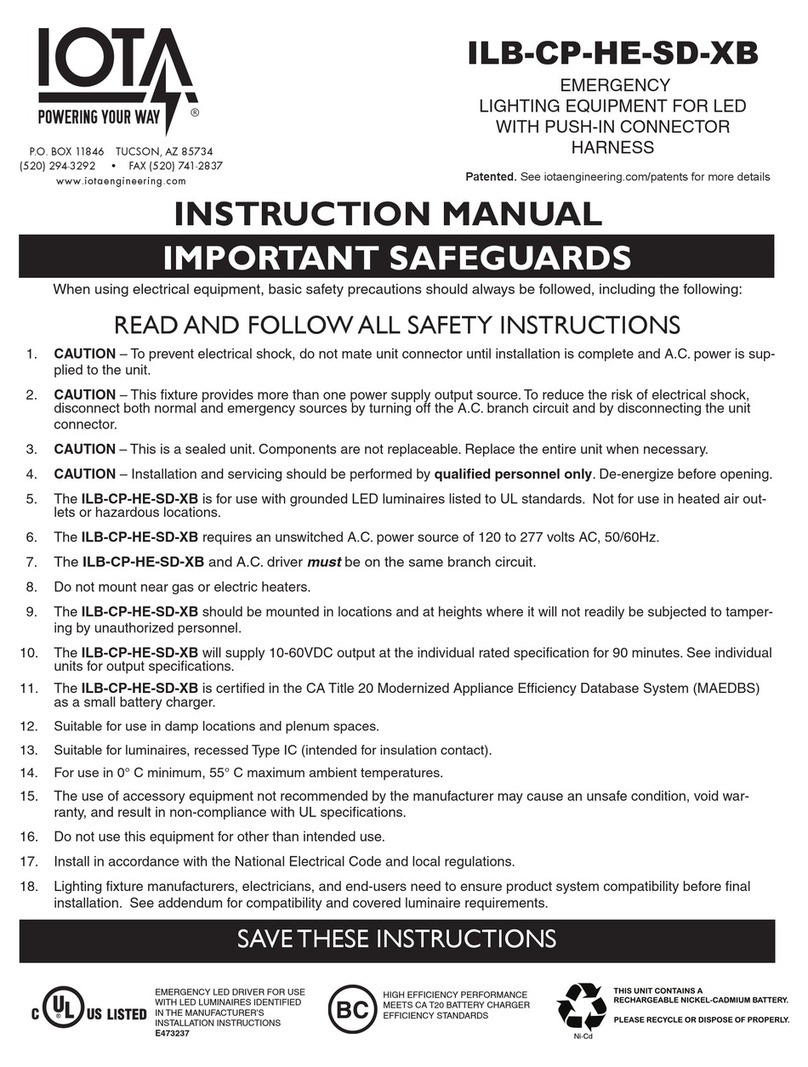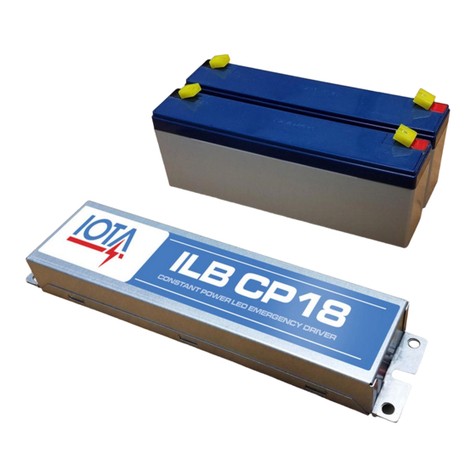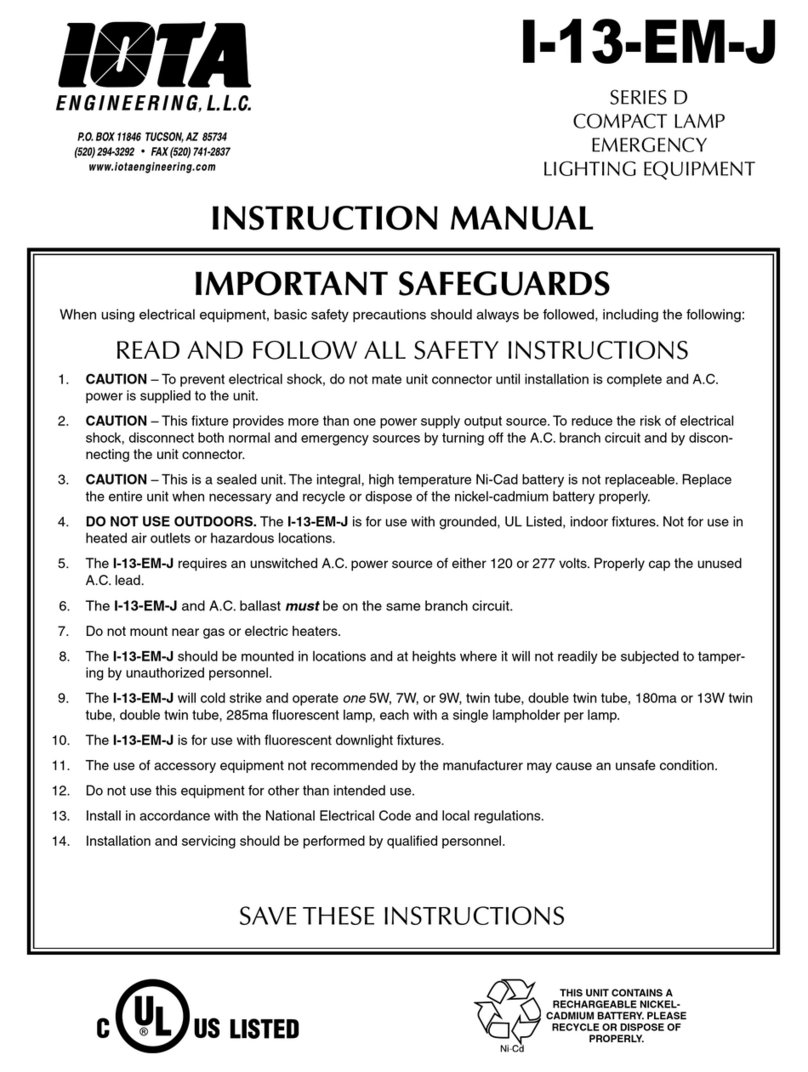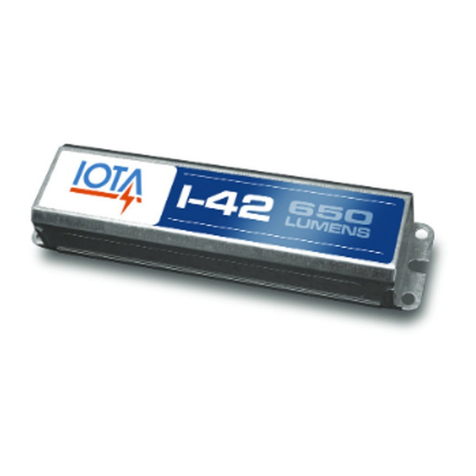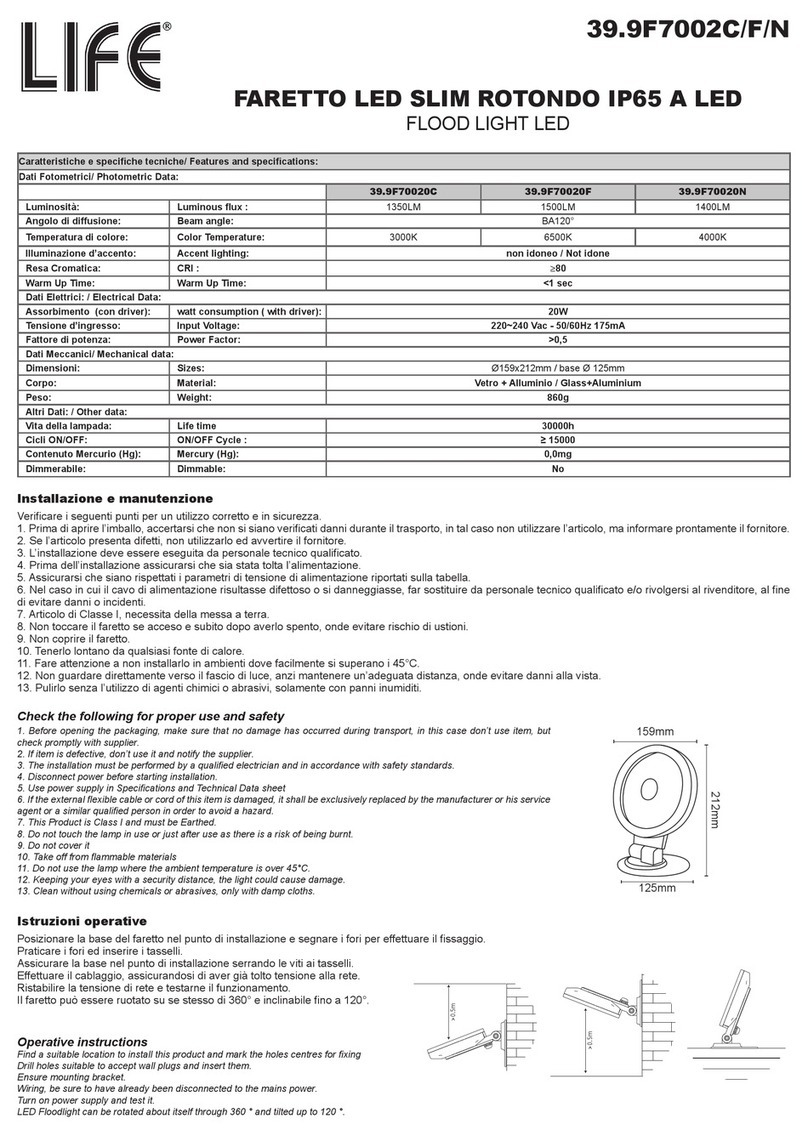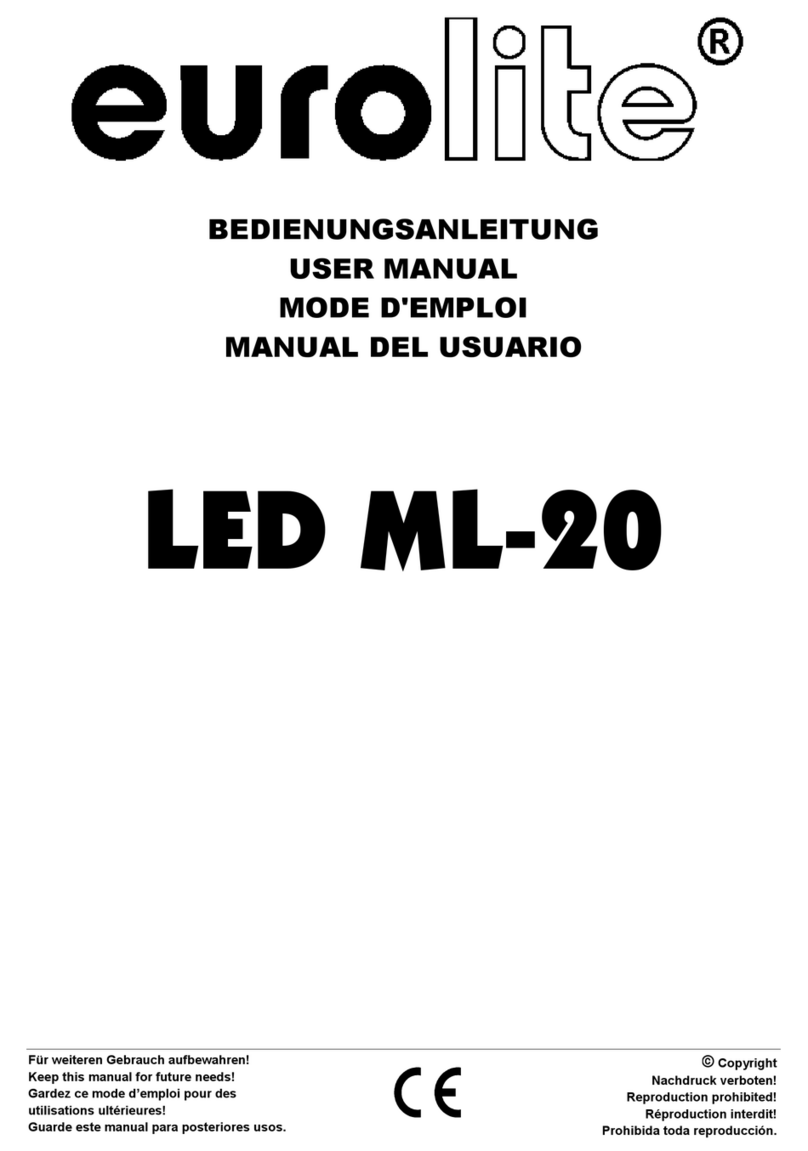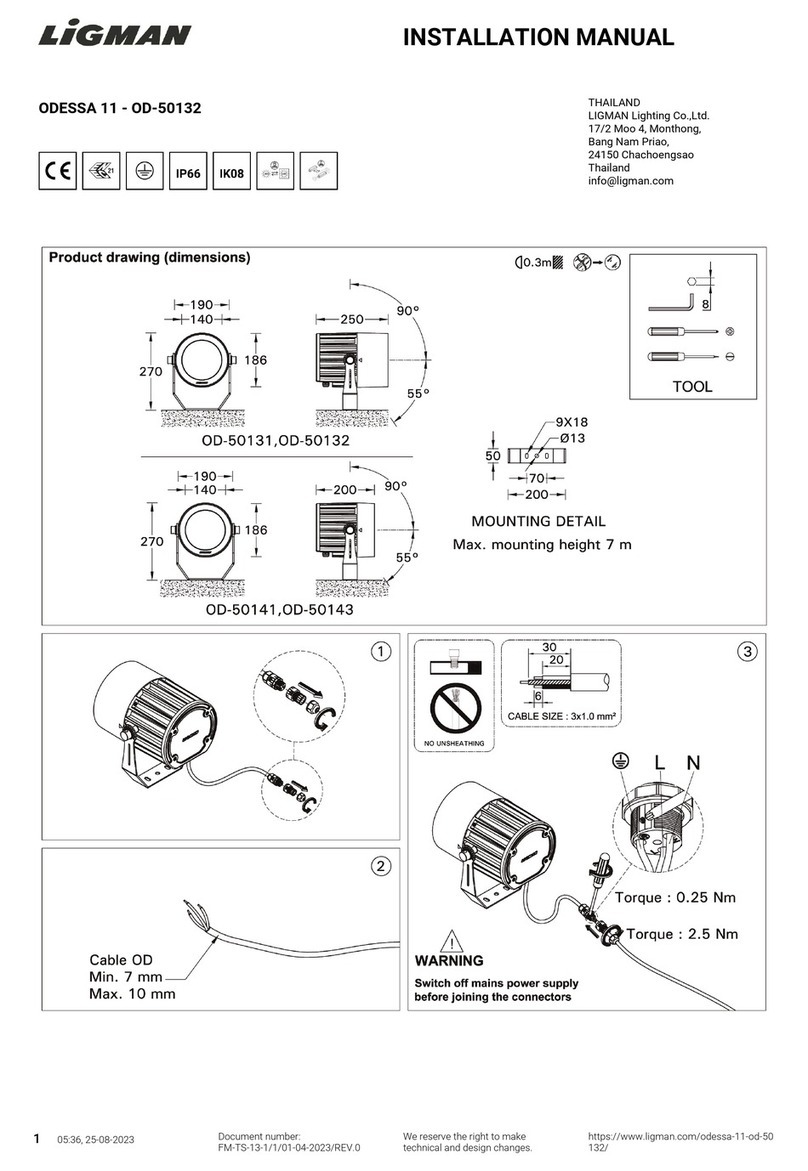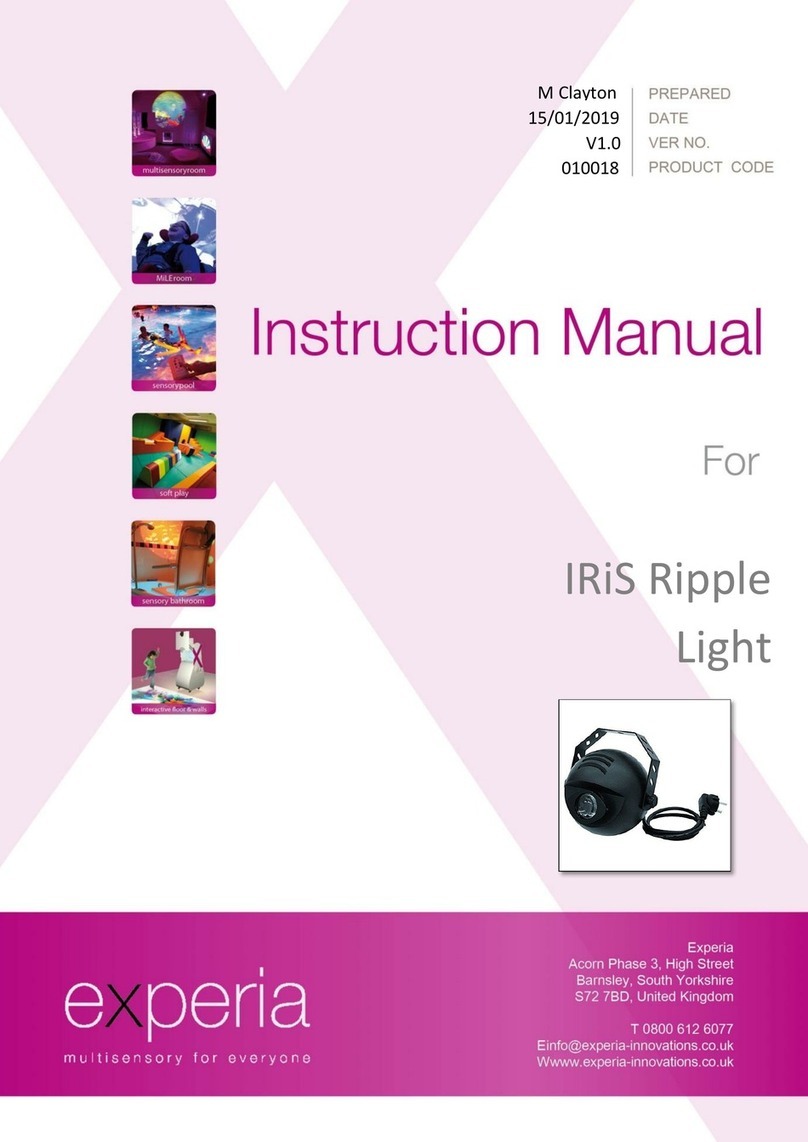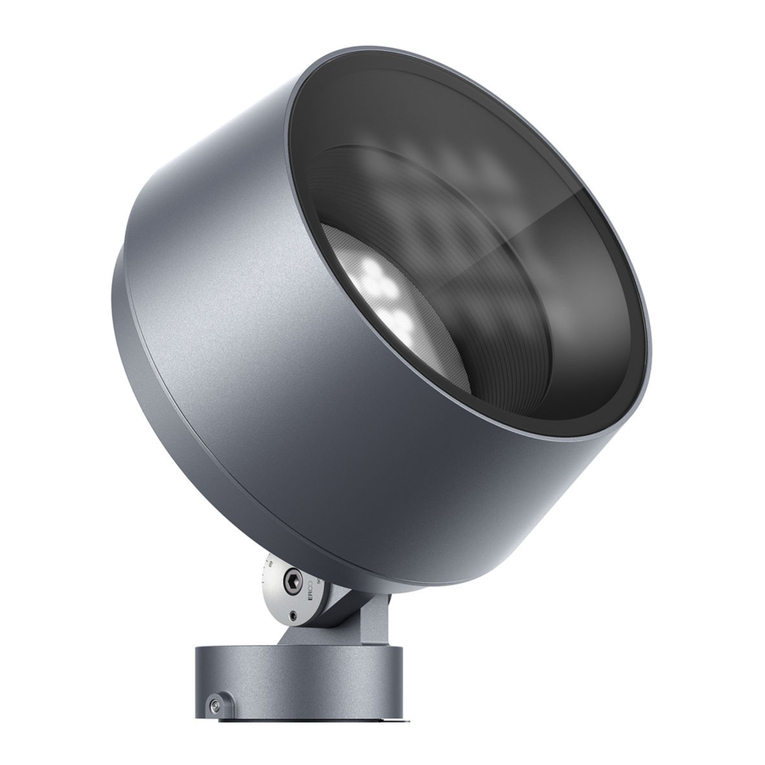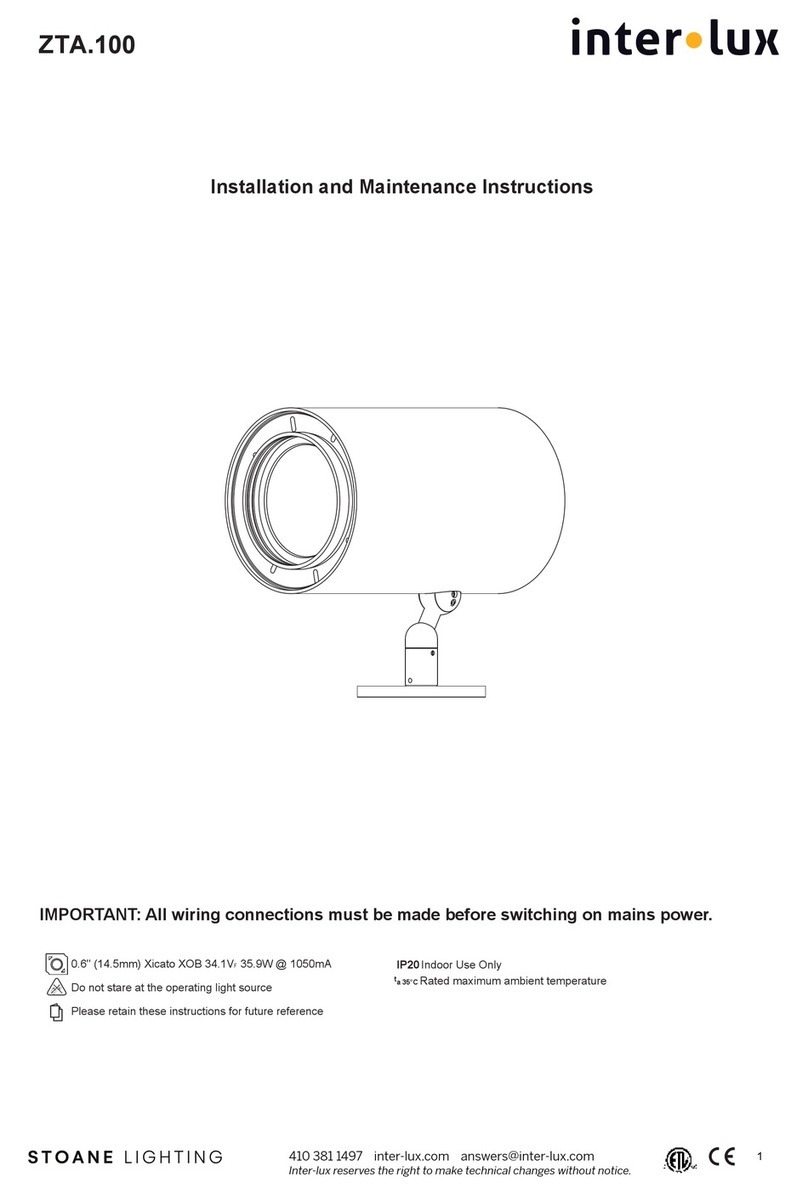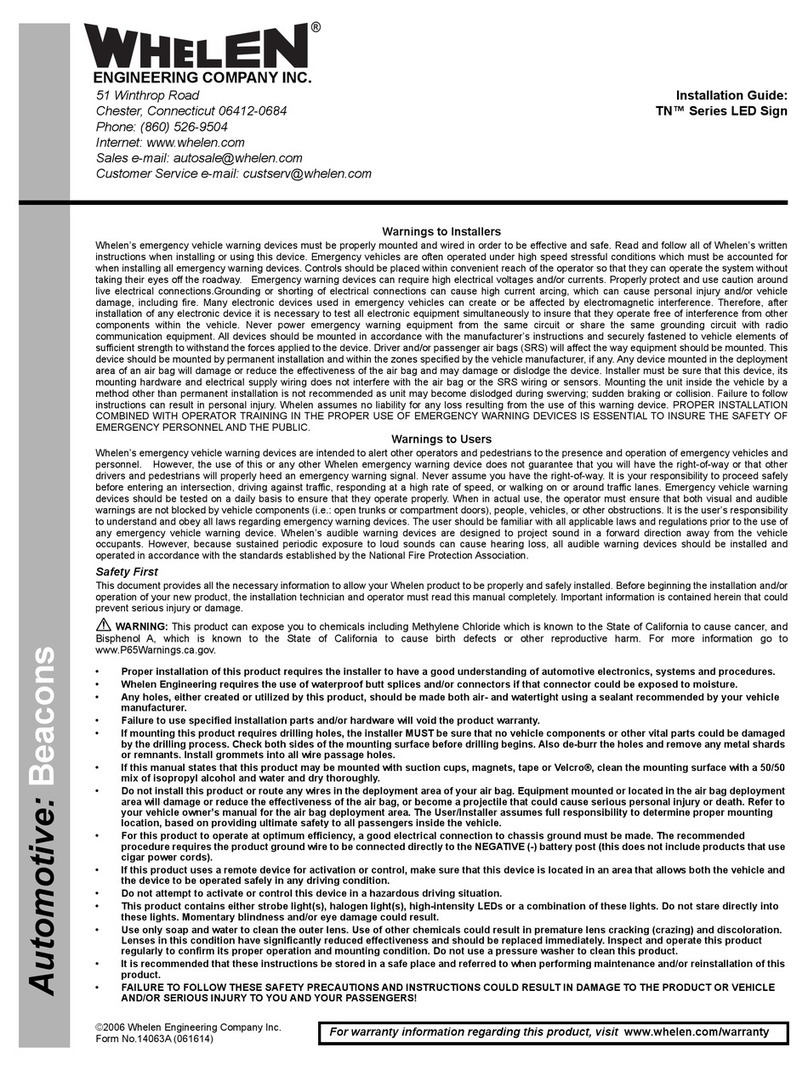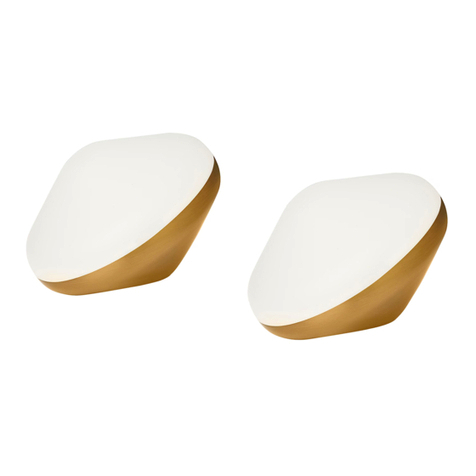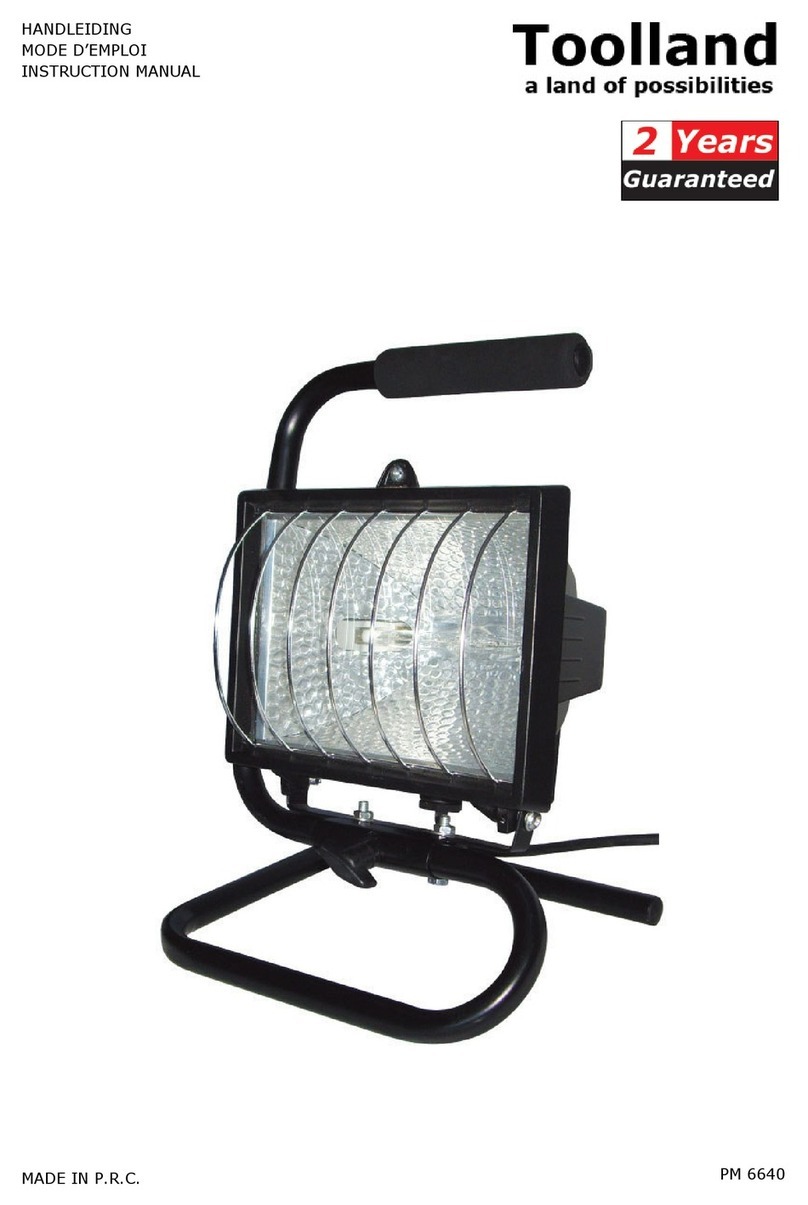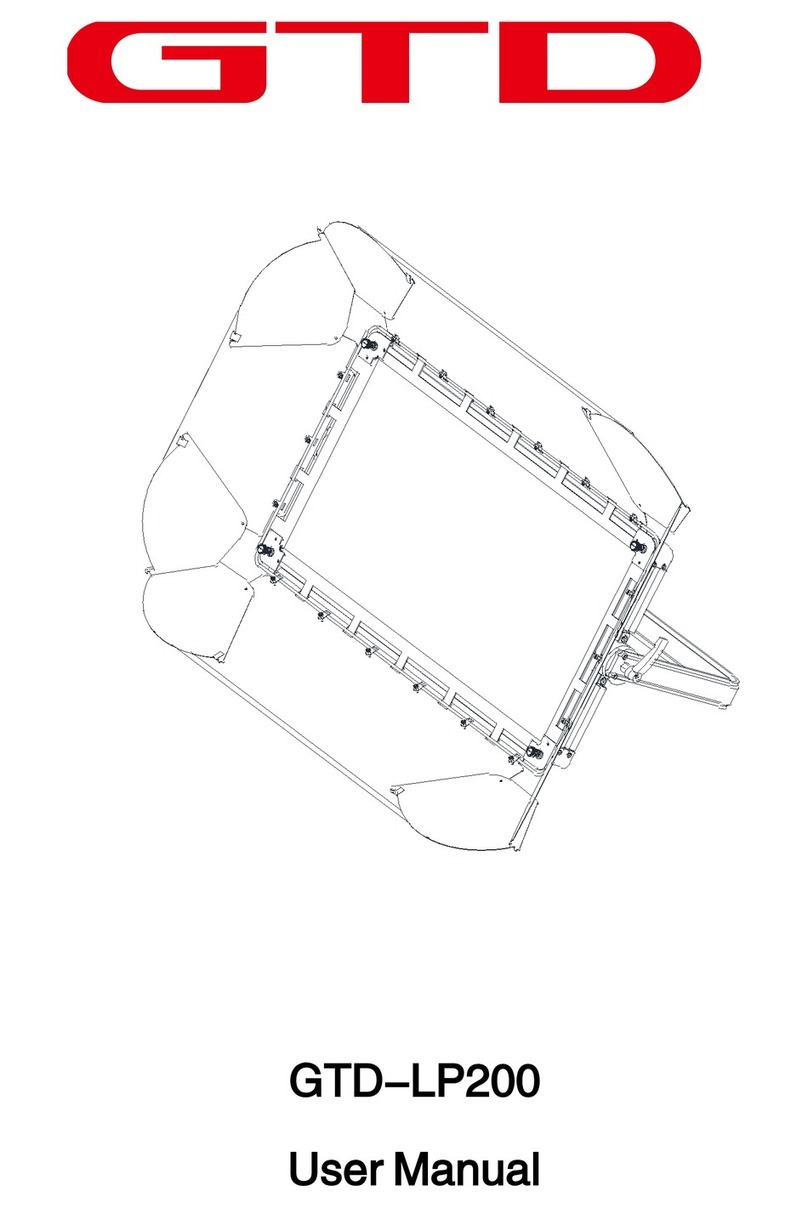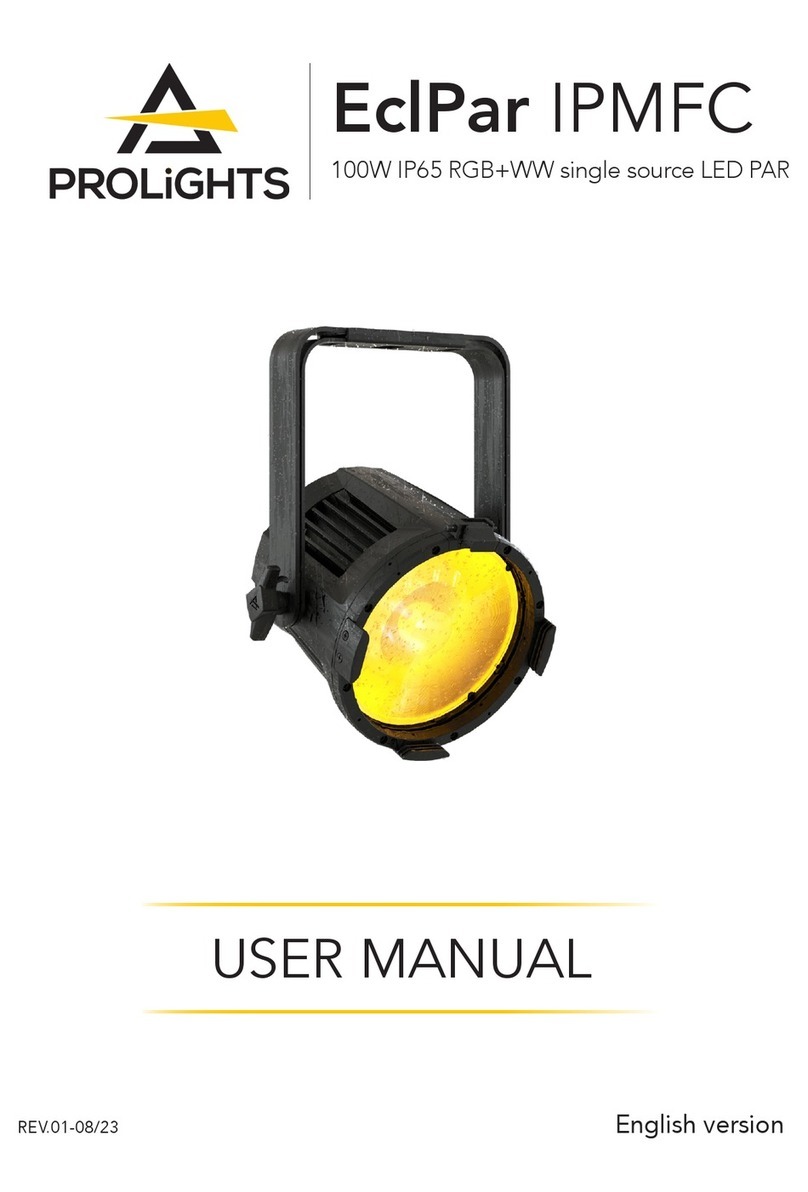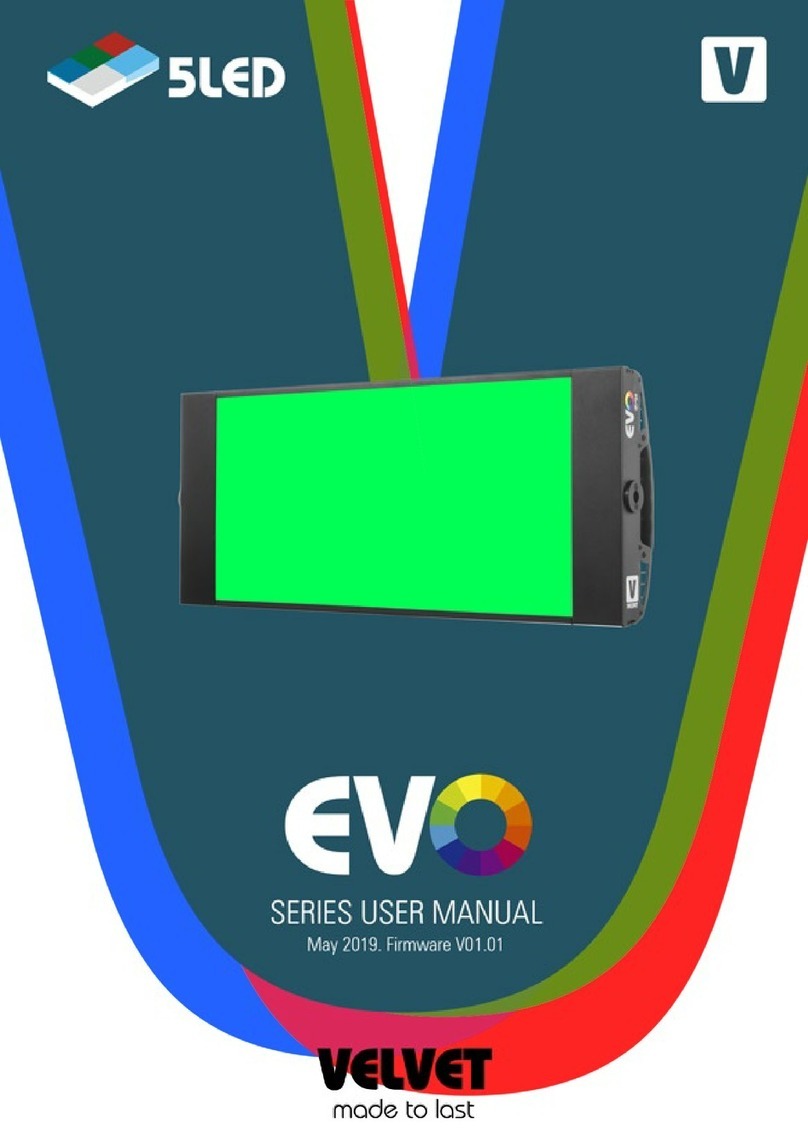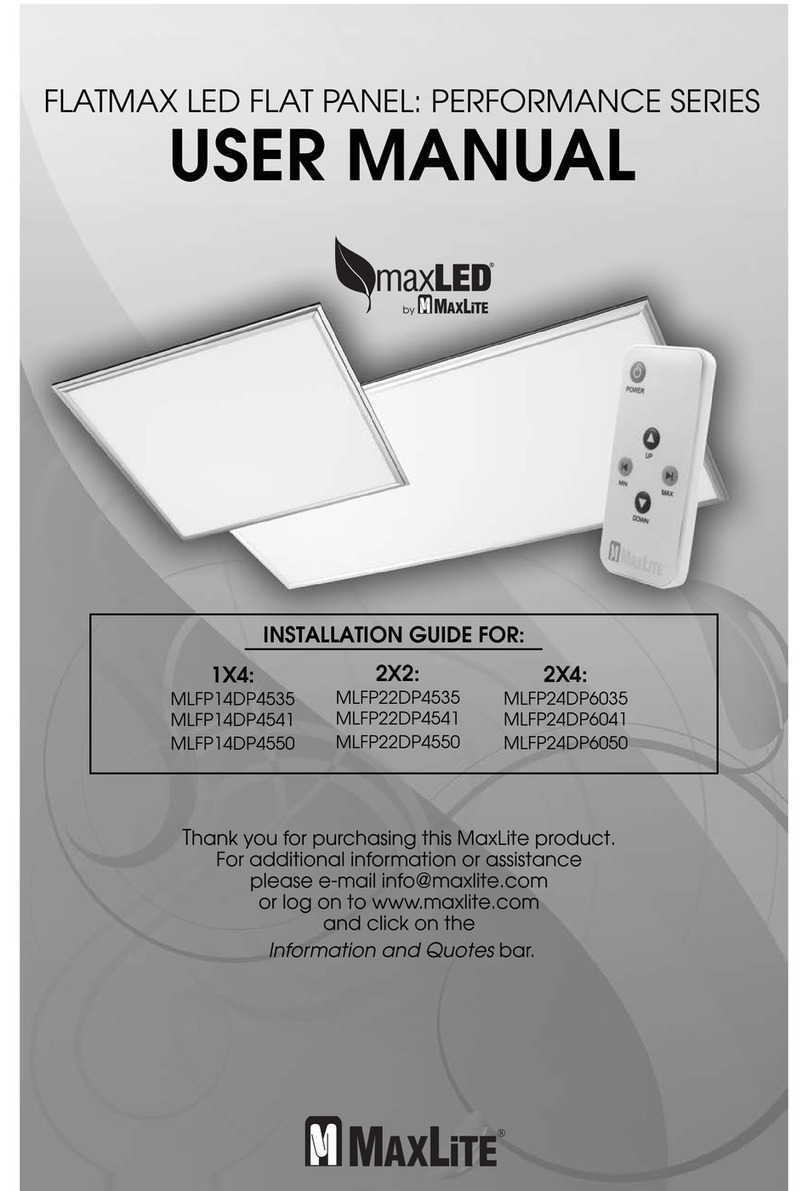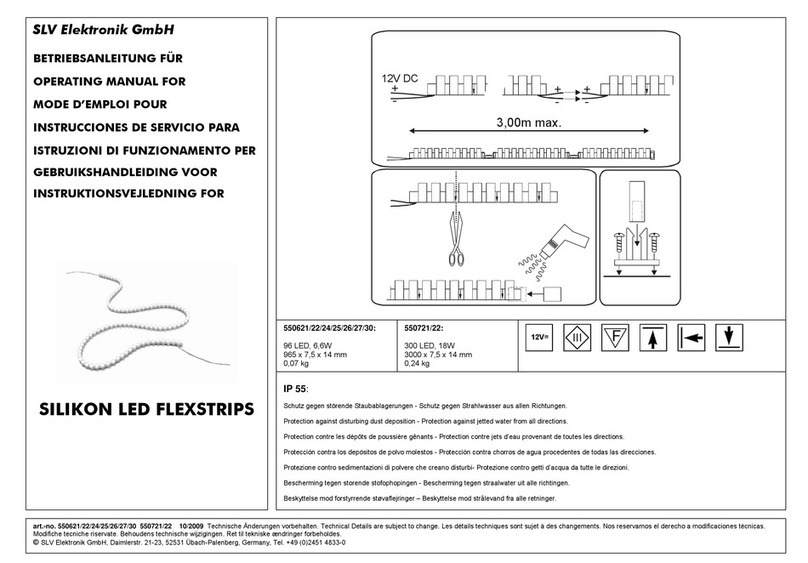
Page 3
4. Wire the AC Input
A. The ILBLP CP07 HE SD BP and BPS and A.C. driver MUST be on the same branch circuit.
B. The ILBLP CP07 HE SD BP and BPS requires an unswitched A.C. power source of 120 to 277 VAC,
50/60Hz; therefore when used with switched xtures, the ILBLP CP07 HE SD BP and BPS input must be
wired before the switch.
5. Install the Threaded Body Test Switch (TBTS)
ATTENTION - The TBTS serves as the unit connector of the ILBLP unit. The ILBLP CP07 HE SD BP and
BPS will initiate after both the TBTS connections are made and AC power is supplied.
Downlight Fixture – Select a convenient location on the xture so the TBTS can be seen and accessed after the
installation. Allow for clearance inside and drill a ½” hole. Remove the nut from the TBTS. Insert the TBTS wires
through the hole and push the TBTS housing into the ½” hole and secure with the nut. Connect the TBTS wires
to the ILBLP CP07 unit (Red wire to Orange connector, White wire to White connector). Refer to Illustration 3.
NOTE: To ensure proper operation, use only the test accessories provided with the unit (See Page 1).
6. Attach Labels
Attach the appropriate labels adjacent to the TBTS. The Caution label must be on the xture in a readily visible
location to anyone attempting to service the xture.
7. Complete Installation
When the installation is complete, switch the A.C. power on. The TBTS indicator will illuminate.
OPERATION
Normal Mode – A.C. power is present. The A.C. driver operates the LED load as intended. The ILBLP CP07 HE SD BP
and BPS is in the standby charging mode. The TBTS lights, providing a visual indication that the battery is charging.
Emergency Mode – The A.C. power fails. The ILBLP CP07 HE SD BP and BPS senses the A.C. power failure and
automatically switches to the Emergency Mode. One or multiple LEDs are illuminated, for a minimum of 90 minutes.
When the A.C. power is restored, the ILBLP CP07 HE SD BP and BPS switches the system back to the Normal Mode
and resumes battery charging. See page 1 of the Instruction Manual.
TESTING & MAINTENANCE
The ILBLP CP07 HE SD BP and BPS is designed to automatically conduct 60-second tests at regular intervals every
28 to 30 days, and a 90 minute test annually. Automatic testing will not begin until at least 24 hours after the TBTS of
the ILBLP CP07 HE SD BP and BPS has been connected and AC power has been supplied.
Load Calibration - 48 hours after the TBTS is installed and AC power is applied, the ILBLP CP07 HE SD BP and BPS
will conduct a Load Calibration. Note: after the Load Calibration is complete, any changes to the LED load that will
aect its nominal input voltage will necessitate a new Load Calibration (see Table B below for the sequence of button
presses to conduct a manual Load Calibration). Automatic Testing will proceed in the following schedule:
Automatic Monthly Testing – The ILBLP CP07 HE SD BP and BPS will automatically conduct a 60-second test once every
month. If the ILBLP CP07 HE SD BP and BPS encounters a problem, the TBTS will ash RED. See the Table A below for
diagnosis.
Automatic Annual Testing – The ILBLP CP07 HE SD BP and BPS will automatically conduct a 90-minute test every twelve
months. If the ILBLP CP07 HE SD BP and BPS encounters a problem, the TBTS will ash RED. See the Table A below for
diagnosis.
Failure Diagnosis - The ILBLP CP07 HE SD BP and BPS is designed to provide a general indication of where a fault
in the emergency lighting circuit may be located, based on the ashing failure code indicated by the TBTS.
Charge Failure - A fault prevented the ILBLP CP07 HE SD BP and BPS from charging correctly. Please contact
Customer Service.
Battery Failure - The ILBLP CP07 HE SD BP and BPS battery is unable to fully charge, or did not supply power
to the LED load for the required duration of a test. Please contact Customer Service.
Load Failure - The ILBLP CP07 HE SD BP and BPS detected an issue with your LED load or its internal load
transfer. If it can be veried that the LED load is operating correctly, please contact Customer Service.
